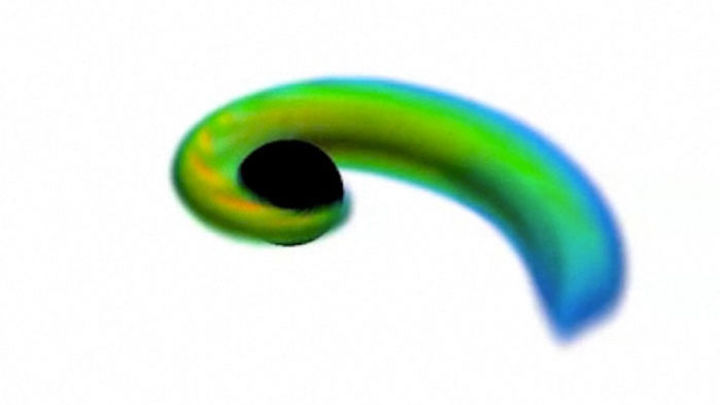In August 2017, Virgo joined the hunt. Within days, the three detectors spotted an even more fruitful event: the merger of two neutron stars—essentially gigantic atomic nuclei about 10 kilometers across that are left behind by the implosion of stars slightly too small to create black holes. That collision also produced a massive explosion that was seen by conventional telescopes across the electromagnetic spectrum.
Now, LIGO and Virgo may have spotted the merger of a black hole and a neutron star. "This is the third leg of our collection, and of course we want to complete our collection," says Vicky Kalogera, an astrophysicist and LIGO member at Northwestern University in Evanston, Illinois. Seeing just one black hole shred a neutron star could reveal how stiff neutron-star matter is, Kalogera says, which is key to deciphering the structure of neutron stars. Theorists still aren’t entirely sure how common black hole-neutron star pairs should be or how they form, she says. Modeling suggests they're more likely to form from stars born in orbiting pairs that then collapse, rather than wandering black holes and neutron stars that somehow find each other.
The new signal was remarkably strong. Working together, the three detectors were able to pinpoint the source on the sky to within 23 square degrees—a spot on the sky about seven times as wide as the moon. In comparison, they were able to locate the merging neutron stars only to within 28 square degrees, even though that pair was much closer, only 130 million light-years away. The strength of the signal reflects how much the precision of the detectors has improved in 2 years, Brady says.
To really nail down the nature of the colliding bodies, researchers hope that conventional telescopes can spot evidence of some sort of an explosion, which would indicate the presence of neutron star material. So far, astronomers have reported no obvious signs of such an "optical counterpart," Brady says.
That lack of an optical counterpart means the identification of the objects rests entirely on their masses, which researchers estimate from the gravitational waves. One is heavier than five solar masses, and the other—the presumed neutron star—is lighter than three, Brady says. But that second identification isn't entirely certain, Kalogera says. "Maybe it's not a neutron star? Maybe it's a tiny black hole?" In fact, based on the earlier observation of merging neutron stars, some theorists argue a neutron star cannot weigh more than about 2.2 solar masses.
If astronomers can’t find an optical counterpart, then LIGO and Virgo researchers will have to try to nail down the nature of the colliding objects from the gravitational waves alone. That's challenging, but not necessarily impossible, Brady says. "This is the great thing about this observation,” he says. “It's right at the edge of our discovery space and we're going to have to work very hard to understand what we're seeing."
Quelle: AAAS

